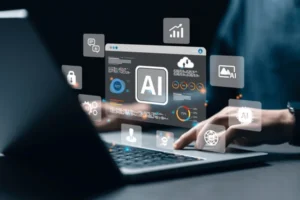Responsive Design: Bridging the Gap Between Web and Mobile

In today’s digital age, the divide between web and mobile platforms is rapidly shrinking, thanks to responsive design. This design approach ensures that websites and applications offer an optimal viewing experience across various devices, whether it’s a large desktop monitor or a compact smartphone screen.
What is Responsive Design?
Responsive design is a web development technique that allows a website to adapt to the size and orientation of the user’s screen. It involves the use of flexible grids, layouts, images, and CSS media queries. Instead of creating separate designs for different devices, responsive design ensures that a single website can adjust seamlessly, providing users with a consistent experience regardless of the device they use.
Why is Responsive Design Important?
With the increasing use of smartphones and tablets, it’s crucial for businesses to have a website that functions well on all devices. A responsive design improves user experience, which in turn can lead to higher engagement, reduced bounce rates, and increased conversion rates. Furthermore, search engines like Google prioritize mobile-friendly websites in their rankings, making responsive design a key factor in SEO strategies.
Bridging the Gap
Responsive design effectively bridges the gap between web and mobile by creating a unified experience. Users no longer have to struggle with zooming in on tiny text or navigating awkwardly through non-mobile-friendly sites. Instead, they can enjoy a smooth, intuitive experience that feels natural on any device.
The Future of Responsive Design
As technology continues to evolve, the principles of responsive design will remain critical. With the rise of new devices like smartwatches, foldable screens, and more, the need for adaptable and responsive designs will only grow. Businesses that embrace this approach will be better positioned to meet the needs of their users, regardless of how they access the web.
With its ability to analyze vast amounts of data and make decisions at incredible speeds, AI has become a cornerstone of modern technology. It is used in everything from personal assistants like Siri and Alexa to more complex systems in industries such as finance, automotive, and manufacturing.
AI’s impact on healthcare is particularly noteworthy. It enables early diagnosis of diseases, personalized treatment plans, and even robotic surgeries, improving patient outcomes significantly. In the automotive industry, AI drives innovation in autonomous vehicles, making them safer and more efficient.
However, the rise of AI also brings challenges, such as job displacement and ethical concerns. As AI systems become more capable, there is a growing need for regulations and guidelines to ensure they are used responsibly and for the benefit of society.
Despite these challenges, the future of AI looks promising, with endless possibilities to improve our quality of life and solve complex problems. As AI continues to evolve, it will undoubtedly play an even more significant role in shaping the world of tomorrow.
You Can Find Us On
Location:
Ruko Melawai, Blok C No. 8,
Taman Lembah Hijau, Lippo Cikarang,
Serang, Cikarang Selatan
Bekasi, 17550
Hours:
Monday – Friday: 08:00 – 17:00
Phone Numbers:
+62 218 990 5735 +62 878 878 777 78
Email:
admin@ajindotech.com
Copyright ajindotech.com 2024 – All Rights Reserved



